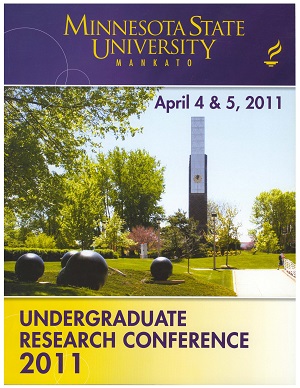Lie Detection: The Role Likability Plays on the Liar and Truth Teller
Location
CSU 253/4/5
Start Date
4-4-2011 9:00 AM
End Date
4-4-2011 10:30 AM
Student's Major
Psychology
Student's College
Social and Behavioral Sciences
Mentor's Name
Emily Stark
Mentor's Department
Psychology
Mentor's College
Social and Behavioral Sciences
Description
Current popular crime dramas such as Lie to Me make lie detection seem easy and scientific. However, there is much more to detecting lies than just looking at facial expressions. Trustworthiness and detecting lies and truth may be correlated to how others perceive the individual, that is, the person telling the truth or lie. Previous research has found that people with high credibility, are more likely to be believed than people with low or no credibility, even when high credibility people are lying (Bond and DePaulo, 2008). To examine this idea further, in the current study volunteers watched eight videos that presented either people lying or people telling the truth. Participants answered questions about how they perceived the storyteller, and whether they thought the person was telling a lie or a truth. Questions about the storyteller involved whether they thought the story was a lie, how much they liked the person in the video, and whether they trusted the person in the video. Specifically, they rated how much they liked the person in the video, and whether they trusted the person in the video. It is hypothesized that participants will rate individuals as being honest and trustworthy according to how much they like the individual in the video, such that people who are liked more are also perceived as more trustworthy.
Lie Detection: The Role Likability Plays on the Liar and Truth Teller
CSU 253/4/5
Current popular crime dramas such as Lie to Me make lie detection seem easy and scientific. However, there is much more to detecting lies than just looking at facial expressions. Trustworthiness and detecting lies and truth may be correlated to how others perceive the individual, that is, the person telling the truth or lie. Previous research has found that people with high credibility, are more likely to be believed than people with low or no credibility, even when high credibility people are lying (Bond and DePaulo, 2008). To examine this idea further, in the current study volunteers watched eight videos that presented either people lying or people telling the truth. Participants answered questions about how they perceived the storyteller, and whether they thought the person was telling a lie or a truth. Questions about the storyteller involved whether they thought the story was a lie, how much they liked the person in the video, and whether they trusted the person in the video. Specifically, they rated how much they liked the person in the video, and whether they trusted the person in the video. It is hypothesized that participants will rate individuals as being honest and trustworthy according to how much they like the individual in the video, such that people who are liked more are also perceived as more trustworthy.
Recommended Citation
Duggan, Matthew. "Lie Detection: The Role Likability Plays on the Liar and Truth Teller." Undergraduate Research Symposium, Mankato, MN, April 4, 2011.
https://cornerstone.lib.mnsu.edu/urs/2011/poster-session-A/14



